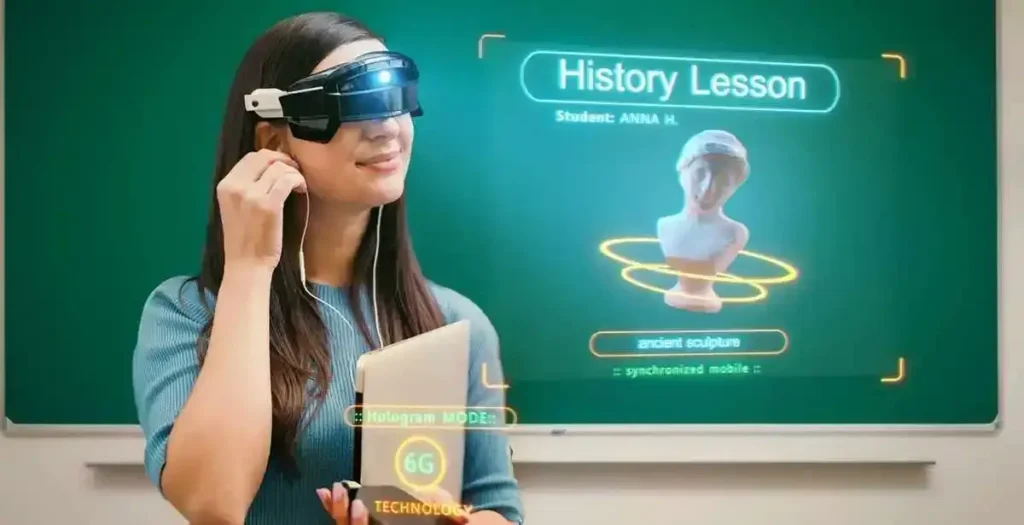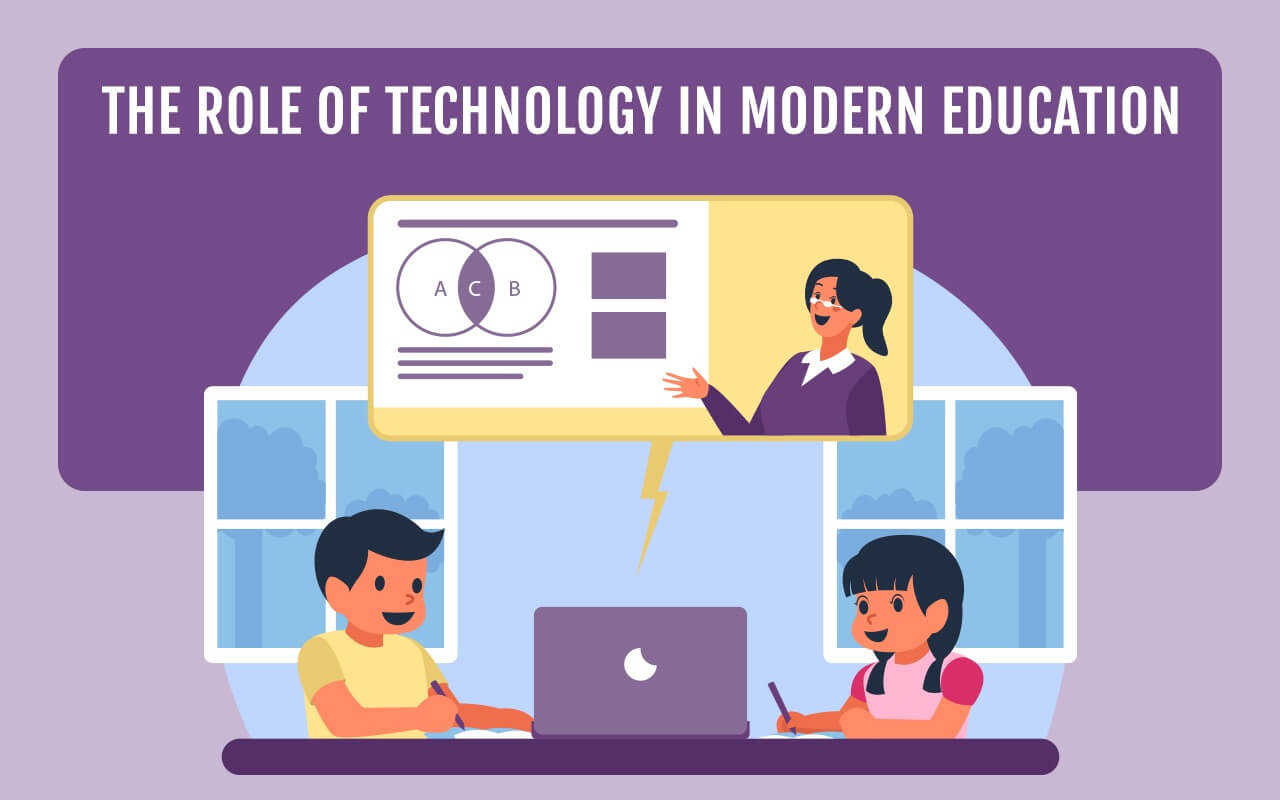Technology has revolutionized nearly every facet of human life, and education is no exception. From enhancing the way knowledge is shared to creating new opportunities for personalized learning, technology plays a pivotal role in shaping the modern educational landscape. But what exactly does this transformation entail, and how does it impact students, educators, and institutions?
This article explores the many ways technology influences education, the challenges it poses, and its potential to redefine learning in the future. By understanding these aspects, we can better appreciate the profound changes technology brings to education and ensure its effective integration into learning systems worldwide.
The Evolution of Technology in Education
Historical Perspective on Technology in Education
The journey of educational technology began long before the digital age. Chalkboards and printed books were revolutionary tools in their time, marking the beginning of organized, structured learning. As the 20th century progressed, projectors and audiovisual aids became staples in classrooms, introducing dynamic teaching methods.
The introduction of personal computers in the 1980s and 1990s marked a seismic shift. These machines brought new opportunities for interactive learning, enabling students to engage with content in novel ways. The transition from static teaching tools to more engaging, interactive platforms set the stage for today’s digitally-driven education systems.
Rise of Digital Learning Tools
With the advent of the internet, digital learning tools gained traction. E-learning platforms like Khan Academy and Coursera became accessible to millions, breaking barriers of geography and cost. The rise of smartphones and tablets further democratized access to educational resources, providing learning opportunities anywhere, anytime.
Today, we see advanced platforms leveraging artificial intelligence and machine learning to tailor content to individual learners’ needs, making education more inclusive and effective than ever before.
Enhancing Accessibility Through Technology
Bridging the Digital Divide
One of technology’s greatest contributions to education is its ability to bridge gaps. Initiatives such as free Wi-Fi hotspots in underserved areas and government-subsidized devices aim to level the playing field, ensuring that students from all socioeconomic backgrounds can access quality education.
Tools for Students with Disabilities
Inclusive education has seen significant advancements thanks to technology. Assistive devices like screen readers, speech-to-text software, and adaptive keyboards empower students with disabilities to participate fully in their learning journey. These tools not only enhance accessibility but also foster independence and confidence.
Global Connectivity in Education
Technology has turned the world into a global classroom. Virtual exchange programs, online collaborations, and international competitions allow students to interact with peers across the globe. This exposure broadens their perspectives, encourages cultural understanding, and nurtures a global mindset.

Personalized Learning Experiences
Adaptive Learning Platforms
One-size-fits-all is a thing of the past. Modern adaptive learning platforms use AI to analyze students’ strengths and weaknesses, tailoring content to suit individual needs. Whether it’s identifying gaps in understanding or providing advanced material for gifted learners, these tools ensure everyone progresses at their own pace.
Gamification in Learning
Who says learning can’t be fun? Gamification integrates game-like elements such as rewards, badges, and leaderboards into educational content. This approach boosts engagement, motivates learners, and makes even complex topics enjoyable to explore.
Data Analytics in Education
Data-driven insights are transforming education. Schools and institutions use analytics to track student performance, identify trends, and optimize teaching methods. This feedback loop not only enhances learning outcomes but also equips educators with actionable strategies to improve their instruction.
The Role of Technology in Teacher Development
Online Training Resources
Teachers are the backbone of education, and technology has revolutionized how they hone their skills. Massive Open Online Courses (MOOCs) like Coursera, Udemy, and EdX offer educators access to world-class training modules, often for free or at low costs. These platforms cover various topics, from subject-specific content to classroom management strategies, empowering teachers to remain current in their fields.
Additionally, webinars and virtual workshops provide opportunities for continuous professional development. Teachers can learn from experts, interact with peers globally, and adopt best practices tailored to their unique classroom needs.
Collaborative Tools for Educators
The rise of collaborative tools such as Google Workspace, Microsoft Teams, and Slack has made it easier for educators to share resources, exchange ideas, and create lesson plans collectively. Digital communities, including social media groups and forums, have emerged as invaluable platforms where teachers can seek advice, discuss challenges, and celebrate successes.
By leveraging these tools, educators not only enhance their teaching methods but also create a support system that fosters innovation and collective growth.
Innovative Learning Techniques
Virtual Reality (VR) and Augmented Reality (AR)
Virtual and augmented reality technologies have opened the doors to immersive learning experiences that were once the stuff of science fiction. Imagine studying the solar system by virtually flying through space or exploring ancient civilizations by walking through a reconstructed archaeological site. VR and AR make abstract concepts tangible, engaging students in ways that traditional textbooks cannot.
These technologies are particularly effective in fields like medicine, engineering, and history, where practical application and visualization significantly enhance understanding.
Simulation and Gamified Classrooms
Simulations allow students to practice real-world scenarios in a controlled, risk-free environment. For instance, medical students can perform virtual surgeries, while business students can run simulated companies. Such experiences prepare learners for challenges they might face in their careers, giving them a competitive edge.
Gamified classrooms go a step further by turning lessons into interactive games. This method boosts student engagement, reduces monotony, and encourages teamwork and problem-solving.
Flipped Classrooms
The flipped classroom model is another innovation reshaping traditional teaching. In this approach, students access instructional content—like videos or readings—at home and use classroom time for discussions, problem-solving, and hands-on activities. This shift promotes active learning, enabling students to clarify doubts and engage deeply with the material under their teacher’s guidance.
Challenges of Integrating Technology in Education
Digital Literacy Gaps
While technology offers immense benefits, not everyone is equipped to use it effectively. Digital literacy remains a significant barrier, especially in regions where access to training and resources is limited. Teachers and students alike must be trained to navigate digital platforms, troubleshoot issues, and utilize tools to their full potential.
Investing in digital literacy programs is essential to ensure that no one is left behind in the race toward tech-enabled education.
Privacy and Security Concerns
The increasing reliance on digital platforms raises critical questions about data security. Protecting student information, including academic records and personal details, is paramount. Institutions must implement robust cybersecurity measures and educate users on safe online practices to prevent breaches.
Balancing innovation with privacy is a delicate task, but one that’s essential to building trust in digital education.
Cost and Infrastructure Barriers
For many schools, especially in developing regions, the cost of implementing technology can be prohibitive. Purchasing devices, maintaining infrastructure, and providing consistent internet connectivity require significant investment. Governments, NGOs, and private organizations must collaborate to address these challenges and create equitable opportunities for all learners.

Technology’s Impact on Educational Outcomes
Improved Student Engagement
Interactive tools such as multimedia presentations, educational apps, and virtual labs have transformed classrooms into dynamic environments. These resources captivate students’ attention, making lessons more engaging and memorable. For example, using animations to explain complex scientific processes can make abstract concepts easier to grasp.
Enhanced Retention and Understanding
Studies have shown that combining visual, auditory, and kinesthetic elements improves knowledge retention. By catering to various learning styles, technology ensures that students not only memorize information but also understand and apply it effectively.
Measurable Academic Improvements
The use of data analytics in education has yielded tangible results. Schools can track performance metrics, identify areas needing improvement, and implement targeted interventions. For instance, platforms like Edmodo and Schoology allow teachers to monitor student progress and adjust their teaching strategies accordingly.
The Future of Technology in Education
AI and Machine Learning
Artificial intelligence is set to play an even larger role in education. From intelligent tutoring systems that provide instant feedback to predictive analytics that identify potential dropouts, AI is reshaping how we teach and learn. These technologies promise a future where education is not only personalized but also proactive in addressing challenges.
Blockchain in Education
Blockchain technology offers secure and transparent solutions for credential verification and record-keeping. Students can maintain lifelong academic records on decentralized platforms, simplifying processes like college applications and job searches. This innovation enhances credibility and reduces fraudulent practices.
Sustainable EdTech Solutions
As concerns about climate change grow, the education sector is adopting eco-friendly technologies. Digital textbooks, virtual labs, and cloud-based resources reduce the need for physical materials, lowering the industry’s carbon footprint. Sustainability will continue to drive innovation in educational technology.
Conclusion
Technology is undeniably transforming modern education. From breaking down barriers to providing personalized learning experiences, its impact is profound and far-reaching. However, this transformation comes with challenges that must be addressed to maximize its benefits.
As we look to the future, it’s clear that technology will continue to play a central role in education. By embracing innovation while addressing its challenges, we can create a learning environment that empowers students and teachers alike.
